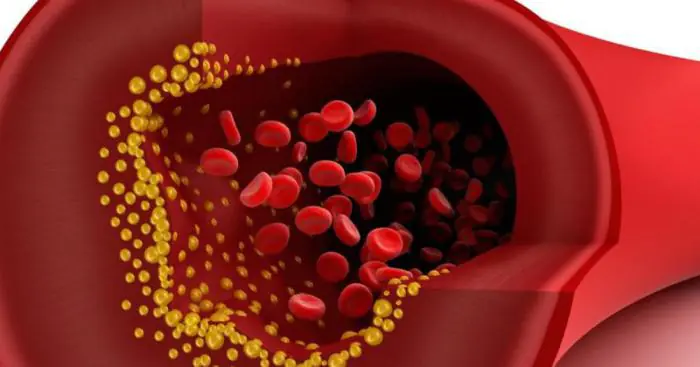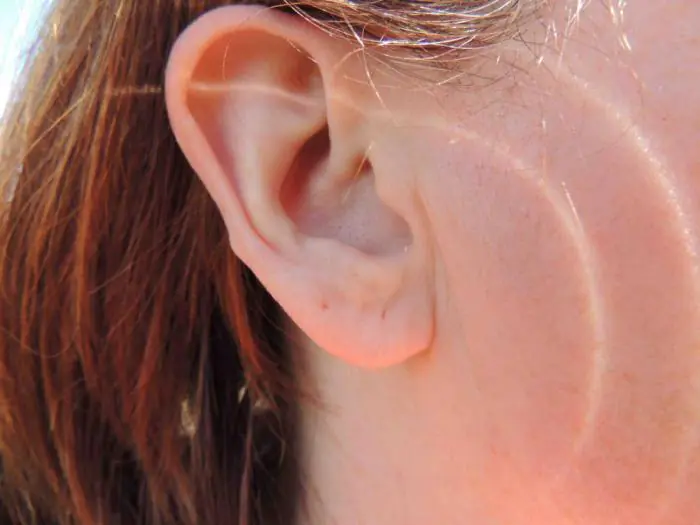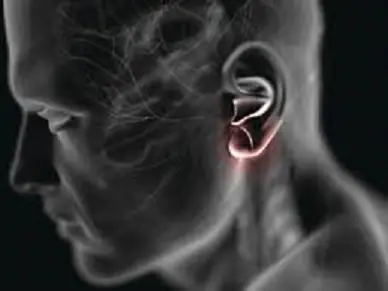Prevention of cardiovascular diseases is the main goal of doctors, but early diagnosis is also very important. This may lead to lifestyle changes and medical treatments that delay the onset of a heart attack or prevent you from having one. Almost 80% of all heart diseases can be prevented through lifestyle changes. You will be surprised to know the following signs of underlying heart disease.
Erectile dysfunction may indicate blocked arteries

Men have their own warning system for asymptomatic coronary artery disease. If it is difficult or impossible to achieve an erection, this indicates a blockage of the arteries in the pelvic area, which often occurs before a heart attack occurs. On average, three to five years pass between the onset of erectile dysfunction and the diagnosis of coronary artery disease. This means you have enough time to detect the disease and prevent heart problems. If you're starting to have sexual problems, look for and treat the underlying causes of arterial damage before just buying a life-saving pill.
Baldness may indicate an artery problem

In a comprehensive new study of nearly 37,000 men, severe balding on the crown of the head was a sign of silent coronary artery disease at any age. In a separate study of nearly 7,000 people (including 4,000 women), moderate to severe baldness was associated with a doubling of the risk of death from heart disease. The results are true for both sexes.
A crease on the earlobe indicates blockage of the arteries

One rather strange sign of clogged arteries is a crease in the ear (specifically, a sloping crease that runs diagonally from the canal to the bottom edge of the earlobe). This feature has been mentioned in medical research reports on asymptomatic coronary artery disease for several decades. A crease in the ear can be the result of poor blood circulation, including to the arteries and heart. Although some experts say it is just one sign of aging, researchers last year used a sophisticated CT scan to measure signs of coronary artery disease. They found that ear crease predicted heart disease, even when the authors did not take into account other risk factors such as age and smoking.
Pain in legs while walking

Pain in the legs that causes you to limp also indicates clogged arteries. Atherosclerosis can block the arteries of the leg, especially in smokers, even before a diagnosis of coronary artery disease is established. This symptom requires immediate diagnosis. Your doctor should measure the pulses in the legs and perform simple measurements of blood pressure and blood flow in the legs to confirm a diagnosis of poor circulation. It is very important to diagnose coronary artery disease as early as possible, since there are many dietary and medical treatments that can solve this problem.
It is necessary to include more plant foods in your diet and, if possible, give up food of animal origin, and also start taking walks. In this case, the pain in your legs will go away in just a few weeks and will not bother you for at least another few years.

Anyone who has at least one of the above symptoms should know their normal blood pressure, cholesterol and glucose levels. You should be screened for heart disease using an ECG, coronary calcium imaging, and exercise testing. Preventing the disease will cost you much less effort than treating it.
All iherb maniacs are here!
Welcome to the TOP shopping community on iHerb
A fold on the earlobe is a reason to be wary
Do you know what "Frank's Sign" is? I only recently found out about him, although, as it turns out, I’ve had this very sign of Frank for at least 10 years.

A small lyrical digression. I have very big ears. Yes, yes, big, with large fleshy lobes. I don’t really worry about this, although I envy my husband, whose ears are small and neat (well, why does he need such beautiful ears?!). And then one day they told me that I should wear lighter earrings, because the ones I was wearing now were weighing down my ears. I don’t understand anything, what are we talking about? My earrings are normal, not heavy at all. As proof, I took them off and handed them to my interlocutor so that he could verify the correctness of my words. Meanwhile, she looked at her ear in the mirror and saw that there was a deep fold running diagonally across the entire lobe, on both ears. Its depth and overall appearance did not depend on whether there were earrings in the ears or not. I was surprised (I had never paid attention to this before, I don’t even know when this fold appeared or was it there all the time?) and took into account the fact that this is the structural feature of my ear. And she continued to live with it, periodically explaining to people that my earrings are not heavy, but my lobe is so strange, what can you do?

So I lived in blissful ignorance until earlier this year I came across an article that talked about the so-called “Frank Sign”. This is a diagonal fold on the earlobe that begins at the ear canal and crosses the lobe to its edge. For the first time, Dr. S.T. drew attention to the unusual correlation between the presence of such a fold on the earlobe and the likelihood of atherosclerosis of the coronary arteries of the myocardium. Frank back in 1973. In honor of him, this phenomenon was given the name “Sign (sign) of Frank.” He noticed that 80% of patients suffering from atherosclerosis of the coronary arteries of the myocardium have a similar fold on their ears. This sign is especially significant for people who are under 40 years old. This does not mean that all people who have Frank's sign have atherosclerosis, but they are at risk and should be wary and pay attention to this. It is necessary to undergo a medical examination to detect a possible heart problem. And also think about whether a person lives correctly from the point of view of his attitude to health. You also need to keep in mind that the absence of Frank's sign does not guarantee absolute well-being with the health of the cardiovascular system.
In my case, Frank's sign is an indicator of the risk of coronary atherosclerosis. This is hereditary for me, both my father and mother have atherosclerosis. Plus, at the age of 30, I discovered very high cholesterol levels. Thanks to the fact that I paid attention to this in time, completely changed my diet, became a vegetarian, changed my attitude to health and lifestyle, I managed to cope with this potential danger. Now my cholesterol level is normal, I constantly monitor it.
Taking various dietary supplements helps me a lot in this matter. For example, one of the main dietary supplements for me is coenzyme Q10. I have been taking it constantly for about 10 years. It does not directly lower cholesterol levels in
blood, but taking it on a regular basis in the amount of 60 mg daily leads to significant changes in the favorable direction of numerous indicators of risk factors for the development of atherosclerosis. Coenzyme Q10 prevents the oxidation of “bad” cholesterol and thereby stops the formation of cholesterol plaques. It carries energy to all cells of our body, and is especially beneficial to the cells of the cardiovascular system. It is a powerful antioxidant and rejuvenates the body. Many naturopaths recommend its use for people over 40 years of age on an ongoing basis. I bought Q10 from various manufacturers on iHerbe; for me personally, it is important that the capsules are vegetarian. This one is really good
I didn't want to scare anyone with this post. I just want to draw your attention to such an important and unfamiliar sign, Frank’s sign. Check to see if you or your loved ones have such a fold on their earlobe. And if there is, then be sure to undergo a check to detect the risk of atherosclerosis and take appropriate measures.
I wish everyone excellent health! And remember, forewarned is forearmed!
You can always use my code AKT9997 and get a 5% discount on any of your purchases.
This post is written as a story about personal experience using this drug and is in no way a recommendation for use.
These are not symptoms, but a reason to pay attention. With characteristic signs, the body warns in advance about possible diseases of the heart and blood vessels.
1. Fold on the earlobe
Diagonal folds on the earlobe are a sign of heart disease. They were first described by the American Frank Sanders. The folds are called Frank's sign in his honor. Such marks are on the ears of the famous film director Steven Spielberg.
More than 40 studies have confirmed that folds are associated with an increased risk of atherosclerosis, a disease in which plaque builds up in the arteries. The reasons for the connection have not yet been clearly identified. But recently a connection has been discovered not only with cardiovascular diseases, but also with similar problems of cerebral vessels.
2. Xanthomas
These growths under the skin on the elbows, knees, buttocks or eyelids are fatty deposits. Xanthomas themselves are harmless, but they are a sign of possible heart disease or other health problems.
Most often, fat deposits are formed in people with the genetic disease hypercholesterolemia. Their blood contains a lot of low-density lipoproteins, the so-called “bad cholesterol”. There is so much of it that it is deposited under the skin and also in the arteries, forming dangerous plaques.
3. Fingers of Hippocrates
A strange-looking symptom, when fingers look like drumsticks and nails like convex watch glasses, may be a sign of heart disease.
The deformity develops when oxygenated blood does not reach the fingers in the required volume. Cells, trying to solve the problem, produce a special substance that promotes tissue growth.
Drumsticks are one of the well-studied medical symptoms. It was first described by Hippocrates in the fifth century BC. Since then, the disease has been called Hippocrates' fingers.
4. Corneal arch
Excess cholesterol can be deposited not only under the skin or in the blood vessels, but also in the eyes, forming gray-blue arcs or a ring around the outer part of the iris. The symptom is noted in 45% of people over 40 years of age and up to 70% of people over 60 years of age.
A corneal arch does not interfere with vision, but since it indicates a violation of lipid metabolism, it is a sign of impending heart disease.
5. Sore gums and loose teeth
Research confirms that gum inflammation and tooth loss are associated with heart and vascular diseases. There are many bacteria in the mouth, both beneficial and harmful to the body. Bacteria from the mouth can enter the bloodstream, causing inflammation in the blood vessels.
6. Blue lips
Usually people's lips are red. They turn blue or bluish due to lack of oxygen. It's okay if your lips turn blue from the cold or in the mountains. But a persistent change in color gives reason to check the condition of the cardiovascular system.
Find out more
Good health!
Thank you for your interest. If the article is worthy, please like it and share it with your friends on social networks. Subscribe to the channel, don't miss the latest publications.
Medicines, advice on treatment, nutrition and a healthy lifestyle mentioned in this or any other channel publication should not be taken or used without consulting a specialist.



